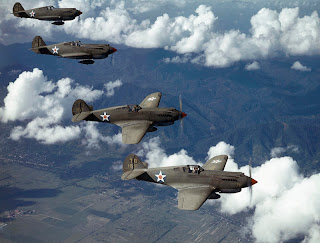| Maynard Owen Williams
Maynard Owen Williams, born in Montour Falls, New York, grew up in Kalamazoo, Michigan. After receiving degrees simultaneously from Kalamazoo College and the University of Chicago, he spent a few years teaching at what later became the American University in Beirut, then worked as a Baptist Missionary teacher in Hangchow, China. He joined the National Geographic staff in 1919 after spending some years with the Kalamazoo Gazette and Christian Herald. During his career with the Society, Williams photographed and wrote about many areas of the world including Greece, the Middle East, China, Czechoslovakia, Afghanistan, Sinai, the Netherlands, and the East Indies, contributing over ninety magazine articles. He participated in the opening of King Tutakhamen's tomb in Egypt in 1923. National Geographic's MacMillan Arctic Expedition in 1925, and the French Citroen-Haardt Expedition crossing Asia by motor car in 1931- 1932. Williams spent thirty-four years with National Geographic, many of them as the chief foreign editor. He died in 1963.
this man did a lot of very weird picture, you can tell they are Maynard Owen williams images because they are all in black and white and they are also quite creepy, i like how he has his own style and try's not to copy of anyone else, i like his own personal technique to taking pictures, and i like how he uses different things to make different photography objects to help out with his work, i like how he gets random people to pose and gets it to looks extra good. i think that he wanted to do more pictures like this because there was more photographers before him that did one or two pictures like this but i think he really liked them, i think the war and the different fashions in different places pushed him towards his work.
|
He had seemed the very spirit of the National Geographic Society. Therefore when the word was received, it spread quickly, even to the most remote of offices. Luis Marden is dead.
Former chief of the National Geographic foreign editorial staff, photographer, writer, filmmaker, diver, sailor, navigator, pilot, linguist, raconteur, boon companion—and oh yes, explorer—Luis Marden died this morning of complications from Parkinson's disease, in Arlington, Virginia. He was only 90 years old.
He did not go to college, choosing freelance photography while working at a radio station instead. While he hosted a radio program, "Camera Club of the Air," the station owners felt Paragallo was too difficult a name for a radio audience. After casting around in a phonebook, they came up with Luis Marden instead.Marden was born on January 25, 1913 in Chelsea, Massachusetts, a suburb of Boston. His real name was Annibale Luigi Paragallo, though as he grew up in nearby Quincy he went by Louis Paragallo. While attending Quincy High School, he was introduced to photography through a chemistry class. Fascinated with watching images appear from seemingly nowhere, he quickly became hooked.
Marden so steeped himself in matters photographic that by the time he was 19 years old, he had written a book, Color Photography with the Miniature Camera,quite likely the first book ever published on 35mm color photography.
This expertise eventually brought him to the National Geographic Society, which prided itself on publishing quality color photography. When he first walked through the doors, a 35mm camera around his neck, no one could know that the slim young man with the dark moustache would become what one writer would call "the epitome of the Geographic man."
Uncanny Timing
If one thing characterized his career, it was being the right man at the right time in the right place.
To begin with, when Marden was hired on July 23, 1934, photographers for theNational Geographic magazine carried bulky cameras with tripods and glass plates into the field. But things were on the verge of change. Marden arrived at the right time, arguing that small 35mm cameras loaded with the new Kodachrome film would revolutionize color photography. His persistence soon paid off, and for decades the Geographic was noted for its dynamic color photography.
Because he could speak Spanish, during World War II he became the Society's "Latin America man," sent on long rambling assignments throughout Central and South America and the Caribbean. Diving off Antigua in 1941, he saw his first coral reef—and decided he had to photograph its riches.
Again he was the right man at the right time in the right place. Underwater color photography was in its infancy, but in the mid-1950s, working with Jacques Cousteau aboard the Calypso, Marden pioneered many of the techniques still used in underwater color photography to this day. Diving became one of his passions.
this man did mainly nature photography, but also liked to do the odd different type of images, he liked to go underwater and try images after they was made, but i cant not explain what type of images he did because he was such a good photographer he did lots of different type of photography.
i think because of the army, and the fashion made this man want to do more pictures like this, and i think that everyone killing different animals made him want to do more pictures like this.





























